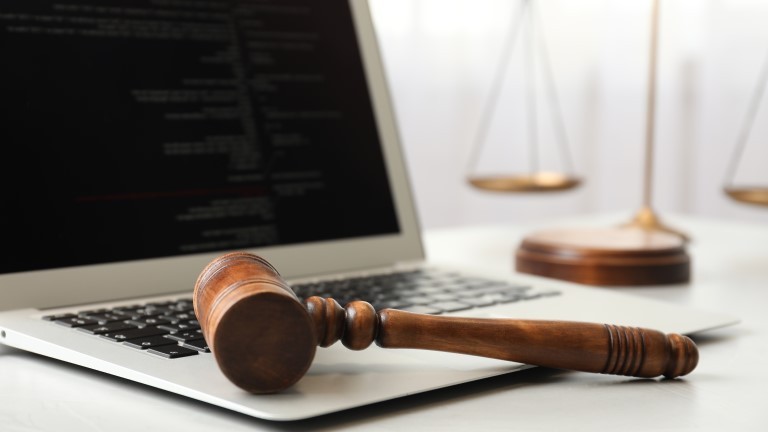Amid the pandemic, the speed of dramatic change in U.S. courtrooms has been drastic, pushing them to become 'virtual courts' much sooner than they had planned
Likely the single most salient after-effect of the current pandemic on the legal landscape is its impact on the courts. Previously, the variance of their technological proficiency ranged from fundamentally unchanged over the last 100 years, to jurisdictions that embraced a technological bent forward over the last decade.
Indeed, because of the pandemic, the speed of change has been unparalleled, pushing courts from hopeful murmurs of being virtual in a decade’s time, to courts functioning virtually within two weeks.
The state of the courts
Recently I listened to a pair of judges on a recent ILTA webinar who embodied the technological divide seen in courts around the United States. In Maryland, Judge Paul W. Grimm, District Judge for the U.S. District Court for the District of Maryland, said the traditional rules of criminal procedure inhibited hearings. In the Court’s code, “the rules state that the defendant has a right to be in court, a right to be present.”
The Court’s interpretation, the defendant must be in court, physically. It took the Coronavirus Aid, Relief, and Economic Security Act (CARES) to give permission for the courts to adjust to less draconian dogma. On the civil side, it appears Maryland is slightly more progressive. If the individual defendant elects “to decline” to be present in the courtroom, the case then can proceed virtually. In Maryland, the rules are more restrictive for criminal cases than in other states.
In the state of Texas, conversely, courts were able to perform nearly all proceedings virtually. Judge Emily Miskel from the 470th District Court in Collin County, noted on the webinar that she has a very tech-forward Office of Court Administration. That office tested multiple remote hearing platforms, settling on Zoom for the entire state of Texas. Initially the state courts assumed utilization would center on emergencies, but it worked so satisfactorily, that they scaled to nearly all cases. Boosting the ability to conduct these hearings was their forward-leaning court management infrastructure. “Statewide electronic filings are all done online” and have been for years, Judge Miskel said.
Building on their demonstrated progressiveness, Texas conducted five pilot remote jury trials. Mary C. McQueen, President of the National Center for State Courts, recently noted that Judge Miskel had a court date with history on May 18, when she and Judge Keith Dean presided over the nation’s first-ever remote jury trial. Jurors connected via cell phones, computer tablets, and laptops. They appeared from their home offices, living rooms, and backyards. Judge
Technology & the new benefits
Overall, the country’s courts are on a wild disparity spectrum in their use of technology. In recent times I learned of one court that only takes bankruptcy filings via FAX, not email, website, mail, or in person. So, what is the road ahead for courts embracing technology?
Platforms
Secure court management platforms that allow courts to go digital with filings, decisions, case management, docketing, calendaring, and video capabilities are essential. Each one of these components are modular in nature, but strung together can create workflows for the court and all parties involved.
The digitization of data, enabling alerts, filings, and all other facets will create a foundation for the courts to function more seamlessly. There are many roles that adapted years ago tangentially or directly connected to the courts, like research, discovery, and depositions; but the biggest hurdle for most have been virtual video courtrooms that are enabled by and connected to a court management platform.
Video
Despite some early security stumbles, Zoom has proven to be the venue of choice of the courts for video meetings, which may be one of the most critical parts to the process. Microsoft Teams appears to be second choice for video interactions.
The State Bar of Texas polled all of their attorneys and asked for impressions of Zoom. According to Judge Miskel, 76% of the attorneys had used Zoom for legal work; 94% had no issues with their client using it; 93% found it to be positive or neutral for their hearings; 85% would recommend using it; and 73% felt it was effective in relation to the courts.
Some of the features that resonate for the judges and attorneys using Zoom are the breakout rooms, which allow for potential juror deliberation in a sealed room. For criminal cases, several judges require defendants be in rooms with cameras that pan and zoom to assure no coaching occurs. The ability to rename those appearing before the judge — their display names on Zoom — is a big feature. Additionally, there is language interpretation functionality, which can better serve more remote locations.
Access to Justice
These technologies have proven to offer greater access to justice, judges say. The courts have found that people with hourly jobs or non-flexible schedules, could join remotely more easily from their job. One judge mentioned recently that during a virtual child custody hearing, the mother joined from an empty church, which was adjacent to her retail store. The demands of her job would not have permitted her to be physically present in court.
Judges also found that defendants and plaintiffs are far more likely to engage because the familiarity of using video on their phones. It was less intimating than being physically present in court.
Speed of delivery
Another judge recently mentioned that the speed of delivery is now fantastically faster. Judges can make decisions rapidly without the need for as many hearings or elongated in-person processes.
Decentralized justice: Online dispute resolution
Online dispute resolution (ODR) is another path forward into the future of technology that impacts the courts. The next phase is starkly innovative. Legal tech company Kleros stated that in recent years, new approaches to dispute resolution have emerged, with contributions coming from such areas as blockchain, cryptography, ODR, game theory, and mechanism design. Fundamentally these opt-in systems seek to “leverage the willingness of peers to adjudicate disputes or, more generally, assess situations that require an impartial and fair outcome,” Kleros reported.
What is profoundly different is the idea of decentralized justice, the move toward decisions emanating from a network of randomly selected, lay peers.
The recent and fundamental changes to the courts is astonishing. What once was a dream for some and unfathomable to others, has been thrust into the light. Today, the United States has functioning virtual courts, hearing real cases. Though much of the infrastructure is tapped and patched together, it serves as a baseline for growth.
The eventual goal is a court management system, integrating secure ease of access, providing a platform for fair justice, and allowing coordination of cases for the masses — all virtually.







